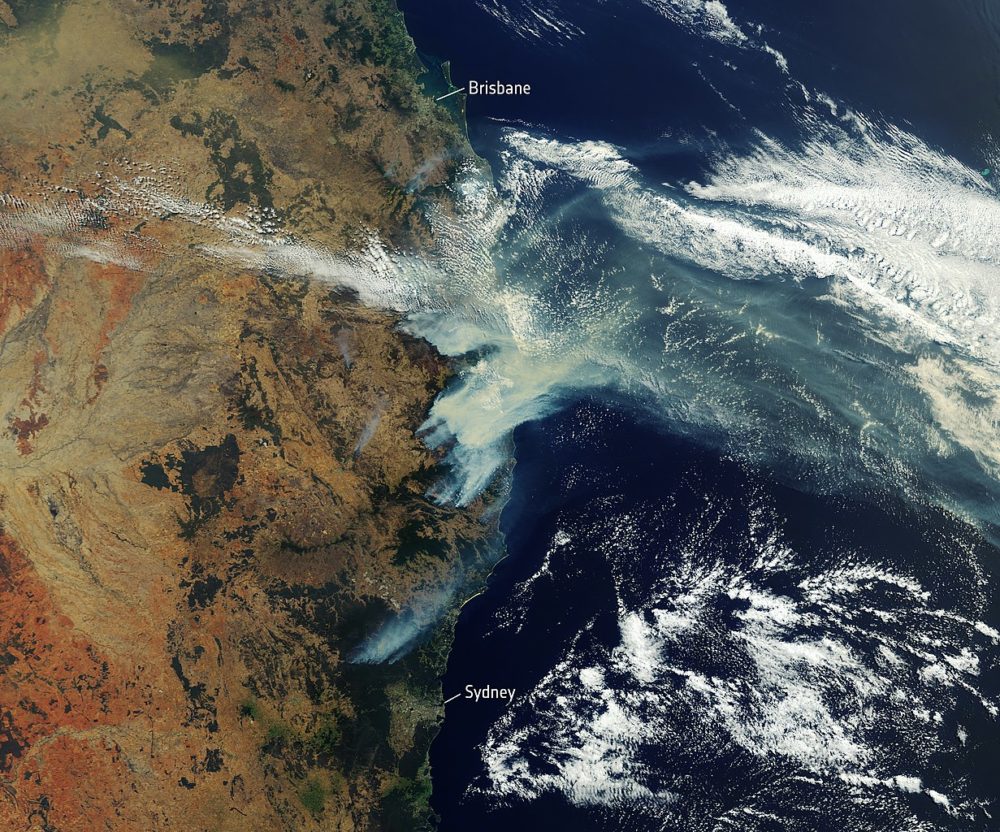
by Arden Nguyen
Australia is currently in the midst of one of its worst bushfire seasons to date. Millions of acres of land have been scorched and 3,000 homes have been burned. Thirty-four people and more than a billion animals (not including bats, frogs, and invertebrates) have died. Thick smoke carried down the coast has choked the air, reaching a hazardous level of pollution.
Each of the country’s six states have been affected, but New South Wales has experienced the worst damage. Other countries, including Canada, New Zealand, and the United States, have contributed aid.
Although it seems that the fires began out of nowhere late last year, they have been burning since July 2019. Bushfire season is a normal occurrence for Australia, caused by hot and dry weather that enables fires caused by lightning strikes to spread easily. But during this season, an especially dry summer, strong winds and people purposely spreading the flames have exacerbated the problem. Since summer in the southern hemisphere isn’t over yet, there is a possibility that the fires will worsen in the coming months.
Recent rainfall has helped to reduce the severity of the fires, easing the burden for firefighters. Although the fires are now more contained, relief may only be temporary.
The situation is particularly serious for endangered or endemic species, both plant and animal, whose existence is threatened by the fires as their habitats go up in smoke. A notable example is on Kangaroo Island, where populations of the dunnart and the black glossy cockatoo are rapidly declining. Livestock animals have also been decimated in the fires.
What role does climate change play in this environmental catastrophe? By heightening the severity of weather worldwide, it is most likely to blame for Australia’s extremely dry summer. This in turn creates a drier landscape that aggravates the growth and spread of the fires.
“What we’re seeing is a worsening of the conditions that make the fires in Australia unprecedentedly bad,” climate scientist Peter Gleick said. “All of these factors — record heat, unprecedented drought, lack of rain — all contribute to drying out the fuel that makes these fires worse. What we have are fires that might have occurred anyway, but the extent, the severity, the intensity of these fires is far worse than it otherwise would have been without the fingerprints of climate change.”
Aside from its influence on the blazes, climate change itself could be intensified as the fires spew large amounts of carbon dioxide into the atmosphere.
If you would like to help, you can donate to organizations like the Australian Red Cross or the New South Wales Rural Fire Service.





